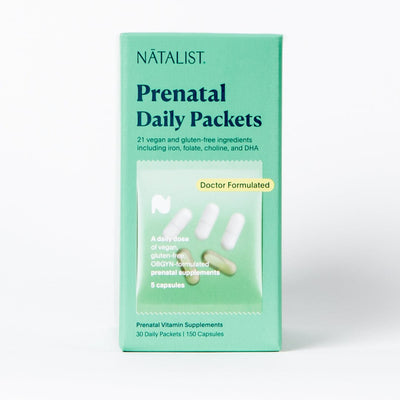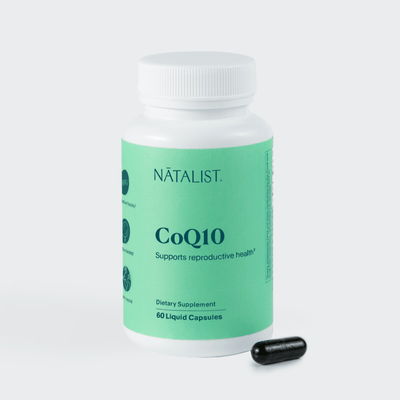Everything You Need to Know About Chemical Pregnancies

A chemical pregnancy is a very early miscarriage that occurs when an egg is fertilized but does not fully implant into the uterus. Dr. Mare goes over everything you need to know in this guide.
What Is a Chemical Pregnancy?
Chemical pregnancy may not be a term most women know from routine conversation but it’s definitely a very common phenomenon. A chemical pregnancy, also known as a biochemical pregnancy, is essentially a very early miscarriage that occurs when an egg is fertilized but does not fully implant into the uterus. These usually occur around weeks 4-5 of a menstrual cycle.
The name “chemical pregnancy” comes from the fact that we diagnose it by biochemical means: enough of the pregnancy hormone or hCG hormone (human chorionic gonadotropin) is produced for it to be detected in the blood with a blood test and usually with a urine home pregnancy test as well.
These pregnancies are more common than you might think--they comprise up to 33% of all pregnancies, and up to 22% of IVF pregnancies. [1] In a normal pregnancy, the fertilized egg implants into the uterine wall about four weeks after the first day of your last period (right around the time of a missed period).
Cells that will grow into the placenta begin to produce enough hCG hormone that it can be detected in the blood or urine. With a chemical pregnancy, the implantation fails, and the cells stop developing before we are typically able to see anything on the ultrasound. This results in bleeding that could last a few days to a week after your normal period was due so that many women who have a chemical pregnancy don’t even realize they’ve conceived.
Symptoms of a Chemical Pregnancy
Things that should clue you in that you may have had a chemical pregnancy include:
- An early positive pregnancy test result, that is then negative at a later date
- A late period
- Heavy bleeding with or without menstrual-like cramps
The bleeding associated with a chemical pregnancy is typically like a period but can be heavier. It’s important to watch for chemical pregnancy symptoms like excessive bleeding like soaking through two pads per hour for two hours in a row. Lightheadedness that makes it difficult to sit or stand without help is another reason to go to the nearest emergency department immediately.
What Causes a Chemical Pregnancy?
The inability of a pregnancy to progress from a chemical to a clinical pregnancy may be related to either the embryo itself or a structural issue with the uterus. The most common for miscarriages, including chemical pregnancies, is a chromosomal abnormality with the embryo.
These are usually sporadic, meaning they happened spontaneously and were not passed down from either parent. An embryo with a chromosomal abnormality has a small chance of progressing and eventually simply stops developing. This can happen to women of any age but is more likely to occur in women 35 or older.
A study published in 2015 looked at patients aged 42 and younger who underwent single embryo transfer (where one fresh and frozen embryo get selected and implanted into the uterus) and compared their chemical pregnancy rate to those attempting to conceive spontaneously. [2]
They found that chemical pregnancy rates were actually a little lower in the IVF group, suggesting that IVF or in vitro fertilization does not influence this. Likely, the opportunity to select the embryo for transfer helps eliminate the possibility that a problematic embryo is implanted in the first place. [2]
One of the chemical pregnancy causes is if the uterus or endometrial lining is not adequate to support the development of a pregnancy. This can be due to things like:
- Uterine fibroids
- Congenital uterine malformations such as a uterine septum or didelphys uterus
- Endometrial polyps
- Hormonal abnormalities that can create poor endometrial development, known as luteal phase defects
What To Do If You’ve Had a Chemical Pregnancy
Once a patient has had two pregnancy losses, a workup for recurrent pregnancy loss (RPL) is typically warranted. When this happens, genetic testing of both partners is often suggested to catch any genetic abnormality like genetic clotting disorders which can sometimes be associated with recurrent miscarriage. If you have any hormone deficiencies or thyroid disease, getting those treated will decrease your risk of having a chemical pregnancy. Frustratingly, no specific factor is identified in up to 75% of couples with RPL.
The silver lining to a chemical pregnancy is that it lets us know a person can get pregnant, even if that pregnancy was not completed.
And for those patients where time is of the essence, there’s no medical reason why they can’t resume trying to conceive after chemical pregnancy immediately.
The silver lining to a chemical pregnancy is that it lets us know a person can get pregnant, even if that pregnancy was not completed. And for those patients where time is of the essence, there’s no medical reason why they can’t resume trying to get pregnant pretty quickly after a chemical pregnancy. In fact, a person can ovulate and get pregnant as soon as two weeks later. We also think that women may be more fertile following a chemical pregnancy based on some research. A recent study found that those who tried to get pregnant within 3 months of a loss were 18% more likely to conceive and 17% more likely to have a live birth than those who waited longer. [3] The researchers did not find any increase in the risk of pregnancy complications in the group who immediately attempted conception. [3]
Women may be more fertile following a chemical pregnancy based on some research.
Can Chemical Pregnancies Be Prevented?
Unfortunately, because most chemical pregnancies are due to spontaneous abnormal chromosomes, there’s no one thing that will prevent them. Maternal age is the greatest determinant of those abnormalities. However, maintaining good nutrition and an exercise program, getting enough sleep, taking a prenatal vitamin, and avoiding exposure to environmental and occupational hazards as much as possible (e.g, lead and the fumes emitted at nail salons) can improve your chances. [4]
Treating any chronic illnesses you may have, switching to medications that are safe in pregnancy and getting surgery to remove any structural abnormalities that could be contributing to pregnancy loss will also help improve chances.
As mentioned earlier, some women may not be aware of a chemical pregnancy if it is thought to be a late period. For those who do notice, an early miscarriage is still a miscarriage. That loss can be distressing, especially for women and families who have been trying to conceive for a while. Appropriate support from your partner and loved ones is important during this time.
In my experience, it’s not uncommon for patients to experience feelings of sadness, anxiety and guilt all due to fears that they may have caused the loss or that something is “wrong” with them. In addition to family and friends, take advantage of another great resource: your healthcare provider. They will have a medical view of what to expect and can help to set your goals and expectations as you move forward.
References:
- Lee HM, Lee HJ, Yang KM, Cha SH, Ahn HK, Kim YJ. Etiological evaluation of repeated biochemical pregnancy in infertile couples who have undergone in vitro fertilization. Obstet Gynecol Sci. 2017;60(6):565-570. doi:10.5468/ogs.2017.60.6.565
- Atif Zeadna and others, A comparison of biochemical pregnancy rates between women who underwent IVF and fertile controls who conceived spontaneously, Human Reproduction, Volume 30, Issue 4, April 2015, Pages 783–788, https://doi.org/10.1093/humrep/dev024
- National Institues of Health News Release. Trying to conceive soon after a pregnancy loss may increase chances of live birth. January 2016. URL.
- Sharma R, Biedenharn KR, Fedor JM, Agarwal A. Lifestyle factors and reproductive health: taking control of your fertility. Reprod Biol Endocrinol. 2013;11:66. Published 2013 Jul 16. doi:10.1186/1477-7827-11-66
Related Blogs
Sign Up For 10% Off Your First Order!
Sign up for insider access, exclusive deals, and OBGYN insights!
Reach Out, We're Here
Have questions about your order or products? For the speediest answer, check out our FAQ section. Need something else? Come find us below.
Customer Support
support@natalist.com
Press Inquiries
media@everlyhealth.com
Business & Partnerships
team@natalist.com
Affiliates + Influencers
team@natalist.com
Job Openings
Careers Page


















